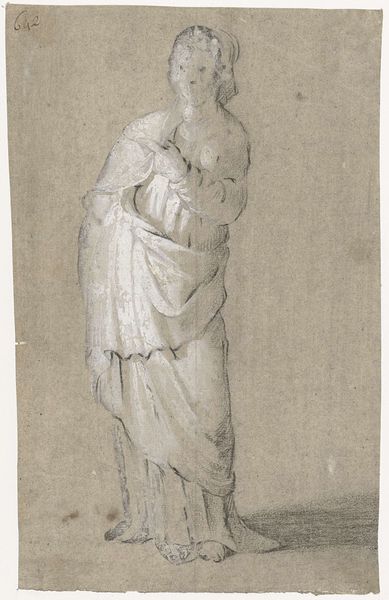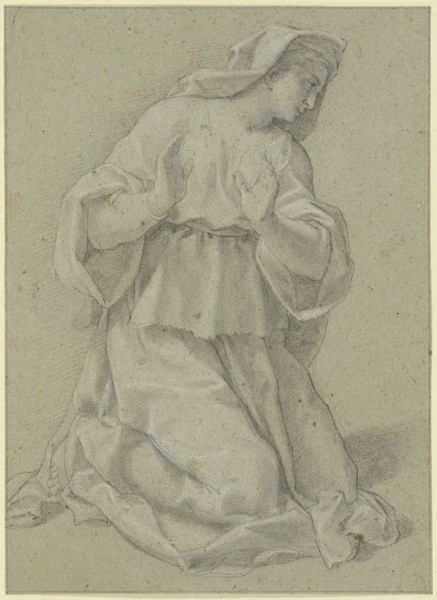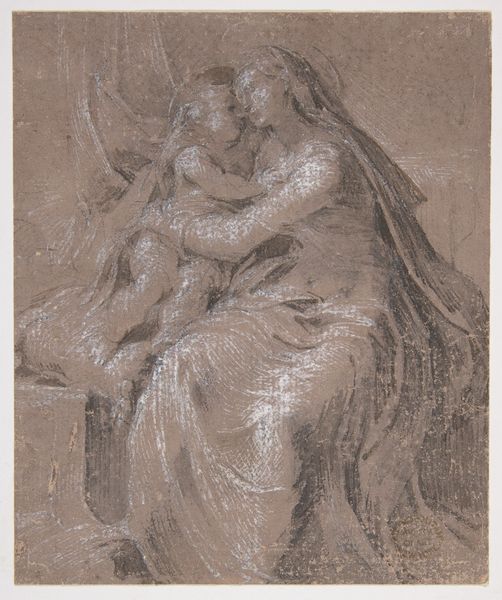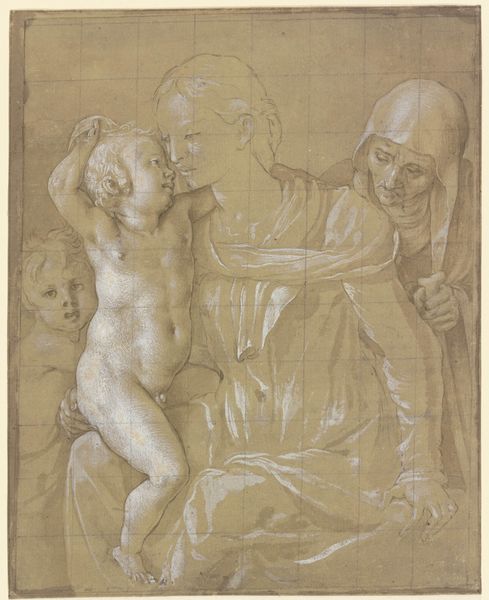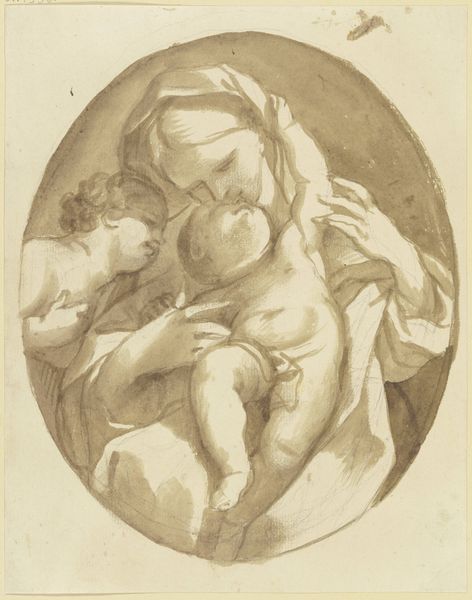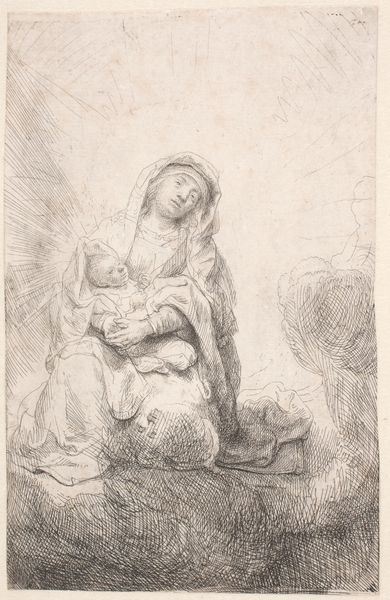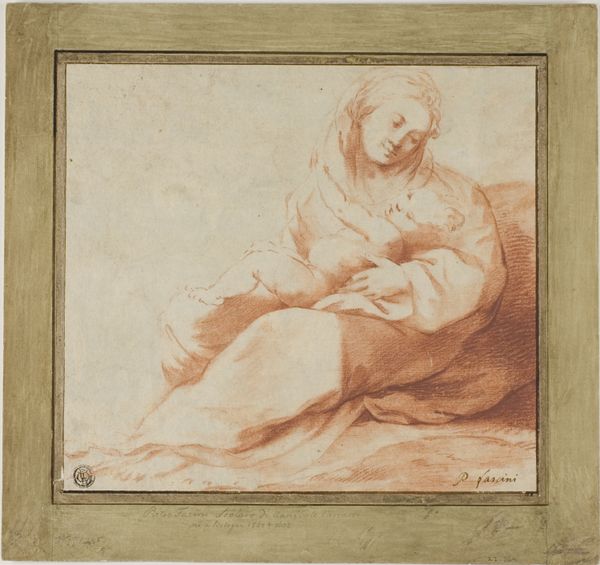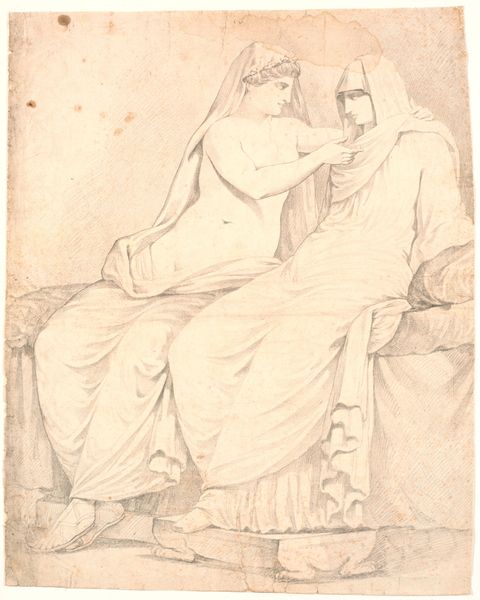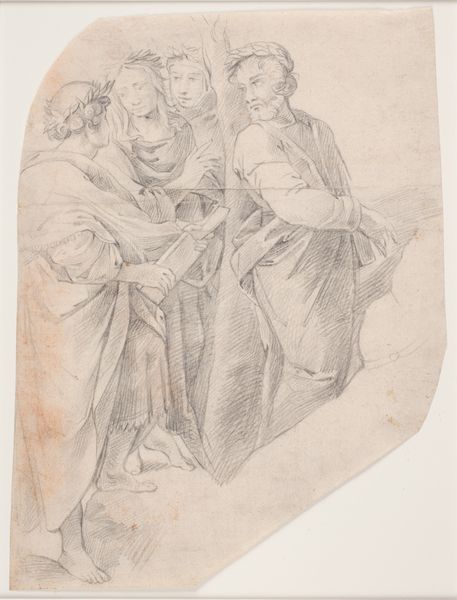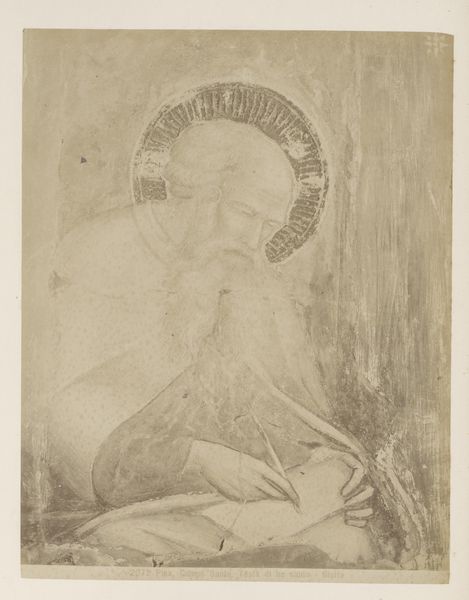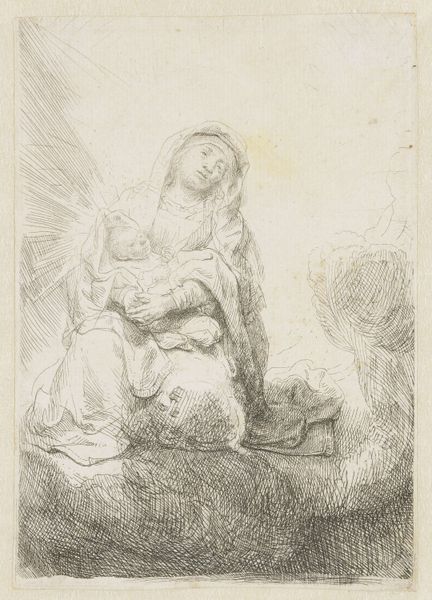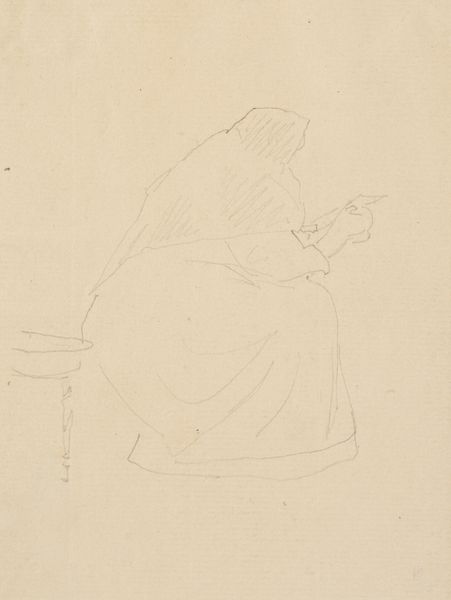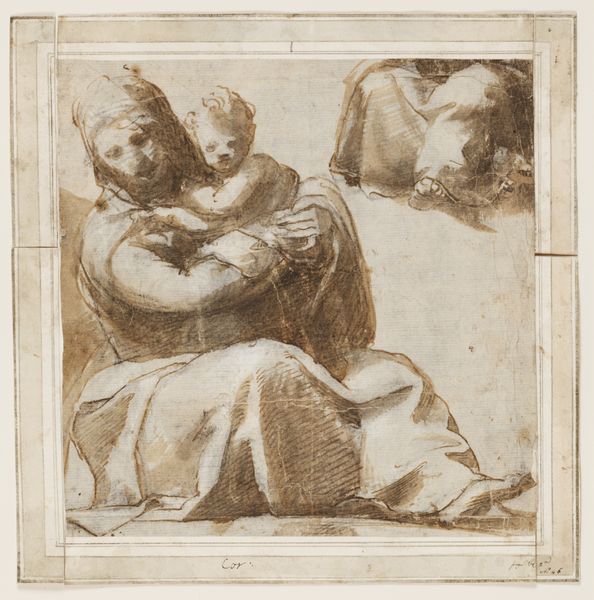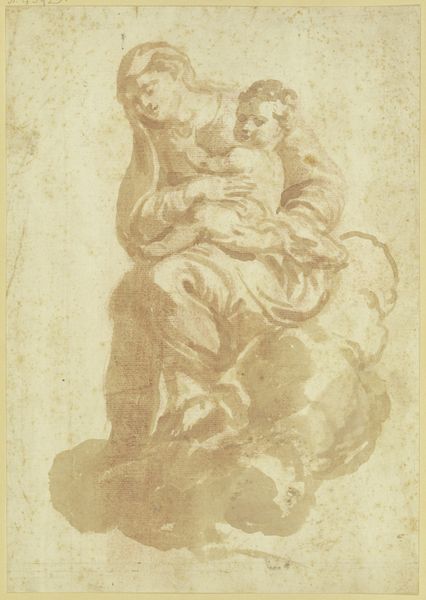
ceramic, porcelain, sculpture
#
portrait
#
mother
#
ceramic
#
porcelain
#
sculptural image
#
figuration
#
sculpture
#
genre-painting
#
decorative-art
#
rococo
Dimensions: Overall (wt. confirmed): 7 1/2 × 4 1/4 in., 1.5 lb. (19.1 × 10.8 cm, 0.7 kg)
Copyright: Public Domain
Editor: This is "La Nourrice," made by the Chelsea Porcelain Manufactory between 1750 and 1752. It’s a porcelain sculpture depicting a woman nursing a baby. I'm struck by how serene it feels, even though it represents a very intimate moment. What do you see in this piece? Curator: It's a fascinating work because it seems so straightforward, yet it's steeped in complex social messaging. While seemingly a celebration of motherhood, we need to consider the historical context. In 18th-century Europe, the aristocracy often employed wet nurses. Editor: So, this idealized image perhaps hides some uncomfortable truths about class and privilege? Curator: Exactly. Who is being represented, and more importantly, who *isn't*? Is it meant as a genuine reflection of motherhood, or a sentimentalized, perhaps even exoticized, view for a specific privileged audience? Also, note the material. Porcelain itself was highly valued, almost exclusively owned by the wealthy. Editor: So the choice of material adds another layer to the work's commentary on social hierarchy? Curator: Absolutely. The delicacy of porcelain contrasts sharply with the raw realities of motherhood for most women at the time, drawing attention to power dynamics and societal expectations imposed on women of different classes. We can ask ourselves why *this* representation of motherhood, in *this* medium, was deemed desirable and for whom. Editor: I hadn't thought about it that way. Seeing it as more than just a charming scene, but as a reflection of 18th-century social inequalities makes it so much more powerful. Curator: Precisely. By exploring these layered meanings, we move beyond mere appreciation and start understanding how art engages with – and sometimes obscures – the complexities of the world. Editor: Thanks for pointing that out. I definitely have a new appreciation for how much social context can be packed into such a seemingly simple image.
Comments
No comments
Be the first to comment and join the conversation on the ultimate creative platform.
